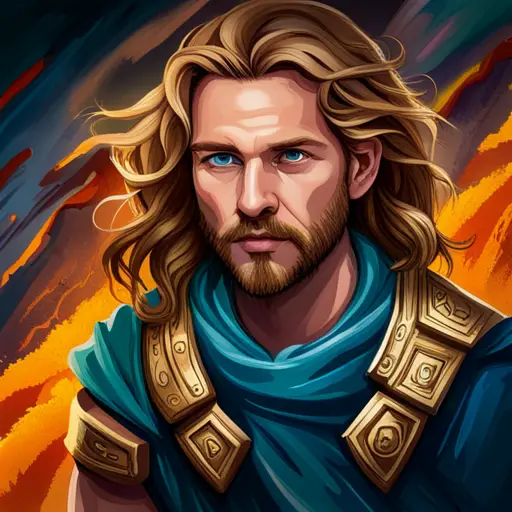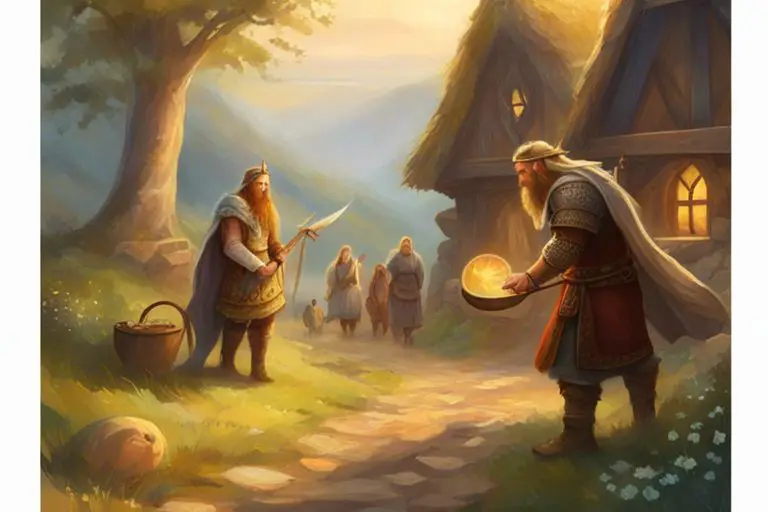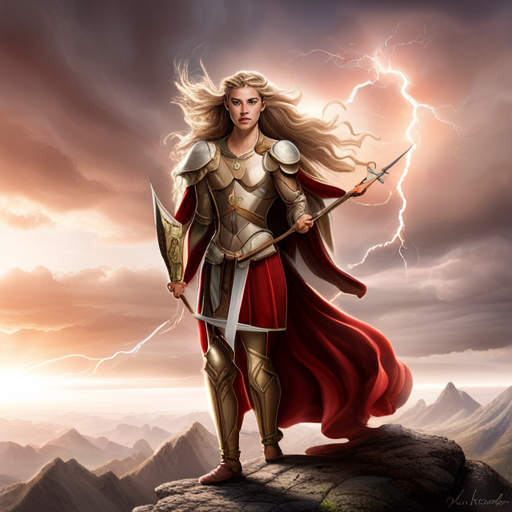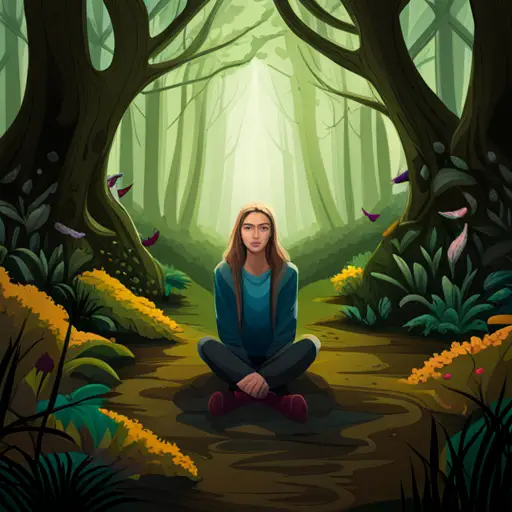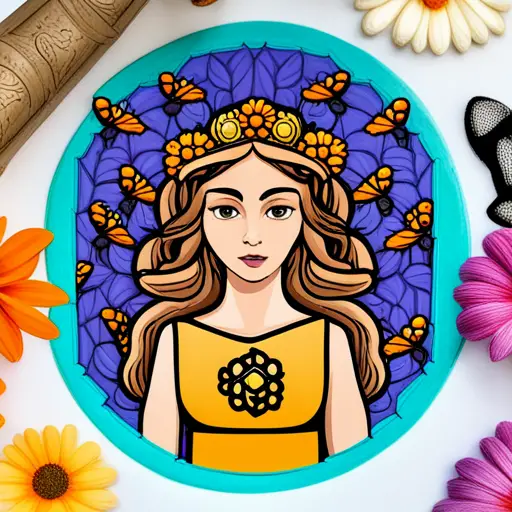As someone who has always been fascinated by mythology, I’ve always found the Norse pantheon to be particularly intriguing. From the fierce warriors of Valhalla to the cunning trickster god Loki, the stories and characters of Norse mythology have captured my imagination for years.
However, navigating the various realms and creatures of this mythology can be a daunting task without the proper guidance. That’s why I was thrilled to discover the Norse Mythology Map, a helpful tool for exploring the world of the gods.
With the Norse Mythology Map, I’ve been able to deepen my understanding of the different realms and creatures that populate this rich mythology. From the icy plains of Niflheim to the golden halls of Asgard, each realm is distinct and filled with its own unique challenges and mysteries.
As I’ve explored these realms, I’ve found myself drawn deeper into the stories and characters of Norse mythology, feeling a sense of belonging and connection to this ancient tradition.
Understanding the Different Realms of Norse Mythology
You’re going to love learning about the different worlds that make up the complex universe of Norse mythology.
This mythology is filled with a variety of realms, each with its own unique characteristics and inhabitants.
There’s Asgard, the home of the gods, Midgard, the world of humans, and Helheim, the underworld where the dead reside.
Other realms include Jotunheim, the land of giants, Svartalfheim, the world of dwarves, and Alfheim, the kingdom of the elves.
These realms are all interconnected and often overlap in the stories of Norse mythology.
Understanding the geography of this universe is key to gaining a deeper appreciation for the rich tapestry of myths that make up this fascinating belief system.
So, let’s dive in and explore the pantheon of Norse gods and goddesses, and the roles they play in each of these worlds.
Exploring the Pantheon of Norse Gods and Goddesses
You’ll get to know the personalities of the gods and goddesses intimately, as you delve into their rich histories and explore their connections to each other.
From Odin, the wise and cunning king of the gods, to Thor, the boisterous and thunderous god of thunder, each deity has their own unique traits and stories that make them both fascinating and relatable.
Freya, the goddess of love and fertility, is often depicted as fiercely independent and powerful, while Loki, the trickster god, is known for his mischievous nature and ability to shape-shift.
As you navigate the pantheon of Norse gods and goddesses, you’ll come to understand the complex relationships between them and the roles they play in shaping the mythology of the Norse people.
Traversing the nine worlds of Norse mythology is no easy feat, but with the help of the gods and goddesses, it becomes an adventure like no other.
Each world has its own distinct landscape and inhabitants, from the magnificent Asgard, home of the gods, to the dark and treacherous Helheim, realm of the dead.
With the guidance of Odin and the power of Thor’s hammer, Mjolnir, you’ll journey through these worlds and encounter everything from giants and dwarves to dragons and serpents.
As you explore the realms of Norse mythology, you’ll gain a deeper understanding of the rich and complex culture that gave rise to these captivating stories.
Traversing the Nine Worlds of Norse Mythology
As you journey through the nine worlds of Norse mythology, it’s like embarking on a grand adventure where each world is a different chapter in a book, revealing new characters and environments that add depth to the narrative.
The Nine Worlds are interconnected by the World Tree, Yggdrasil, which stands at the center of the Norse universe.
The first world is Asgard, home of the Aesir gods, followed by Vanaheim, home of the Vanir gods. Midgard, the world of humankind, is located in the middle of all the worlds.
Jotunheim is the realm of the giants and is separated from Asgard by the river Iving. Niflheim is a world of ice and mist, while Muspelheim is a world of fire and heat. Hel is the underworld, where the dead go, and Nidavellir is the realm of the dwarves. Finally, there is Svartalfheim, the world of the dark elves.
Each of these worlds has its own unique geography and inhabitants, making the journey through Norse mythology a rich and diverse experience.
As we delve deeper into the intricacies of Norse mythology, we discover the many mythical creatures that populate its world. From the mighty dragons and sea serpents to the mischievous elves and dwarves, these creatures are a crucial part of Norse mythology.
They add an extra layer of depth to the stories and help to create a vivid and compelling world that captures the imagination.
So, let’s explore the various creatures of Norse mythology and the roles they play in this fantastic universe.
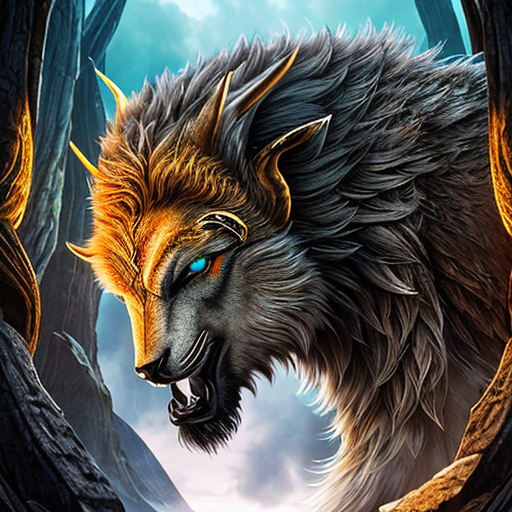
Discovering the Intricacies of Norse Mythical Creatures
Oh, so you think you know everything about the creatures of Norse mythology? Well, get ready to be surprised as we delve deeper into the intricate world of these mythical beings.
The world of Norse mythology is full of incredible creatures that are both fascinating and terrifying. From the wise and powerful giants to the cunning and mischievous dwarves, each creature is unique and adds to the rich tapestry of Norse mythology.
One of the most well-known creatures in Norse mythology is the dragon. These serpentine beasts are known for their incredible strength and fierce temper.
Another famous creature is the Valkyrie, a female warrior who chooses who will live and die in battle.
And who can forget about the mighty unicorn, a symbol of purity and grace that is often associated with magical powers.
Learning about these mythical creatures is an exciting and enriching experience that allows us to understand the myths and legends of the ancient Vikings.
Now that we’ve explored some of the fascinating creatures of Norse mythology, it’s time to learn how to use the Norse mythology map to enhance our understanding of this complex world.
Using the Norse Mythology Map to Enhance Your Understanding
Get ready to dive deep into the world of mythical creatures and enhance your understanding by using a handy tool that’ll take you on an adventurous journey!
The Norse Mythology Map is an excellent resource that can help you navigate the complex world of gods, goddesses, and mythical creatures. This map allows you to explore the different realms and understand their unique characteristics.
The Norse Mythology Map is an interactive tool that offers a visual representation of the Nine Worlds. You can learn about the different creatures and entities that inhabit each realm and understand how they are interconnected.
By using this map, you can gain a deeper understanding of Norse mythology and appreciate the intricate relationships between the different characters. Whether you’re a mythology enthusiast or just curious about the world of Norse gods, the Norse Mythology Map is a great tool to have in your arsenal.
Frequently Asked Questions
What is the origin of Norse mythology?
As someone who’s always been fascinated by mythology, I’ve often wondered about the origins of Norse mythology.
From what I’ve learned, Norse mythology has its roots in the beliefs and stories of the pre-Christian Germanic peoples of Scandinavia.
These stories were passed down through oral tradition and were eventually written down in the 13th century in texts like the Prose Edda and the Poetic Edda.
Norse mythology features a pantheon of gods and goddesses, each with their own unique personality and role in the world.
It’s a rich and complex mythology that’s captured the imaginations of people for centuries.
How did Norse mythology influence Viking culture?
Growing up in Scandinavian culture, I was constantly surrounded by tales of Norse gods and goddesses. These stories weren’t just entertainment; they were integral to our way of life.
The Vikings believed that their gods would intervene in their daily lives and provide protection, guidance, and prosperity. This belief system heavily influenced Viking culture, from their art and literature to their political structures and social norms.
Even their famous longships were adorned with intricate carvings of mythological creatures. Norse mythology gave the Vikings a sense of identity and purpose, and continues to be an important part of Scandinavian heritage today.
What is the significance of the number nine in Norse mythology?
When I first learned about the significance of the number nine in Norse mythology, I was intrigued. It seemed like such a specific number to hold so much power and symbolism.
As I delved deeper into the mythology, I discovered that the number nine represented the nine worlds that were connected by Yggdrasil, the World Tree. Each world was home to different beings, and together they made up the entire Norse cosmology.
The number nine also appeared in other aspects of Norse mythology, such as the nine days that Odin hung from Yggdrasil to gain knowledge of the runes.
It’s fascinating to see how this one number played such a crucial role in the mythology and how it continues to hold significance in modern interpretations of Norse culture.
How did Norse mythology impact modern popular culture?
As a fan of pop culture, it’s hard to ignore the impact of Norse mythology on modern media.
From blockbuster movies like Thor and The Avengers to hit TV shows like Vikings and American Gods, the influence is everywhere.
Even video games like God of War and Skyrim have taken inspiration from Norse mythology.
The popularity of these stories shows that people have a deep subconscious desire to connect with ancient myths and legends, to belong to something bigger than themselves.
Norse mythology has become a key ingredient in the recipe for modern pop culture, adding a sense of adventure and wonder that appeals to audiences worldwide.
What is the role of women in Norse mythology?
As I delved into the world of Norse mythology, I couldn’t help but be struck by the portrayal of women. They weren’t just relegated to the role of meek and mild helpmates, but were instead depicted as strong, powerful beings in their own right.
From the cunning and scheming goddess Loki to the fierce warrior Valkyries, women played a vital role in shaping the world of the gods. Their influence was felt in every aspect of Norse mythology, from battles and war to love and fertility.
It was refreshing to see women taking on such prominent roles in a world often dominated by men, and it made me appreciate the depth and complexity of Norse mythology all the more.
Conclusion
In conclusion, exploring Norse mythology through the use of a map has been an enlightening experience. It’s like being a sailor navigating through uncharted waters, discovering new lands and encountering mythical creatures along the way.
Each realm and deity has its own unique story and significance, adding depth and complexity to the mythology. Navigating the Norse mythology map has allowed me to appreciate the intricate web of relationships and connections between the different realms, gods, and creatures.
It’s made me realize that mythology is more than just a collection of stories, but a reflection of the human experience and our quest for understanding the world around us. So set sail, my friends, and let the Norse mythology map guide you on a journey of discovery and wonder.

